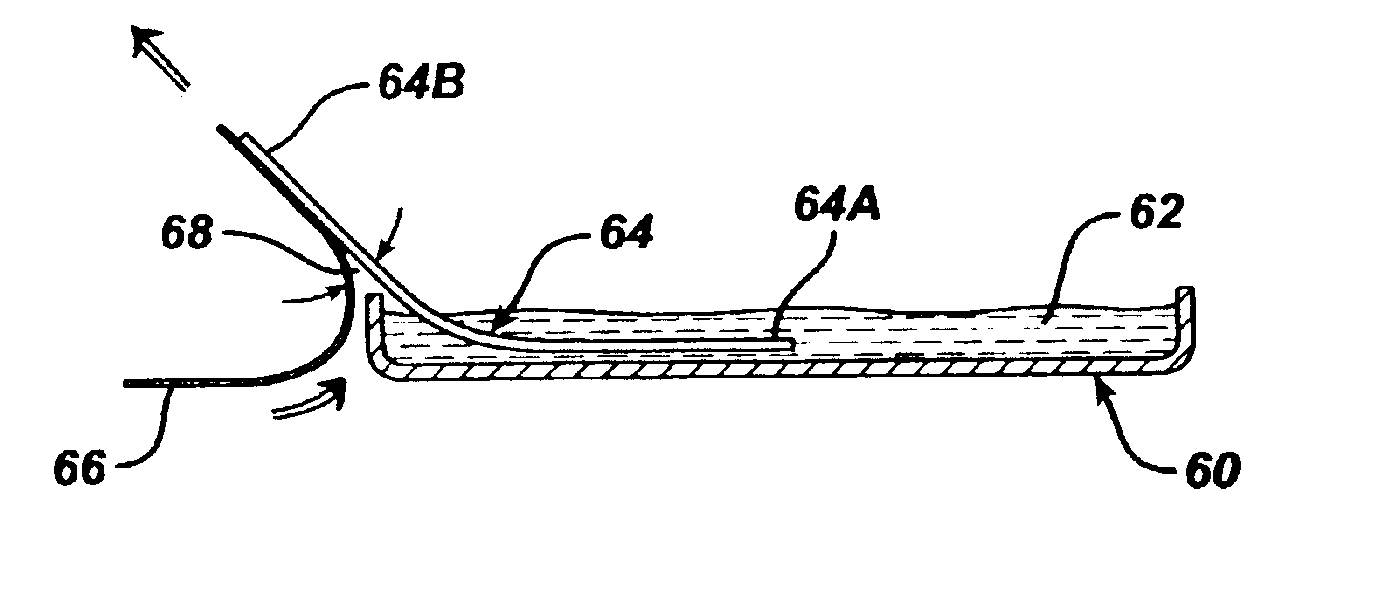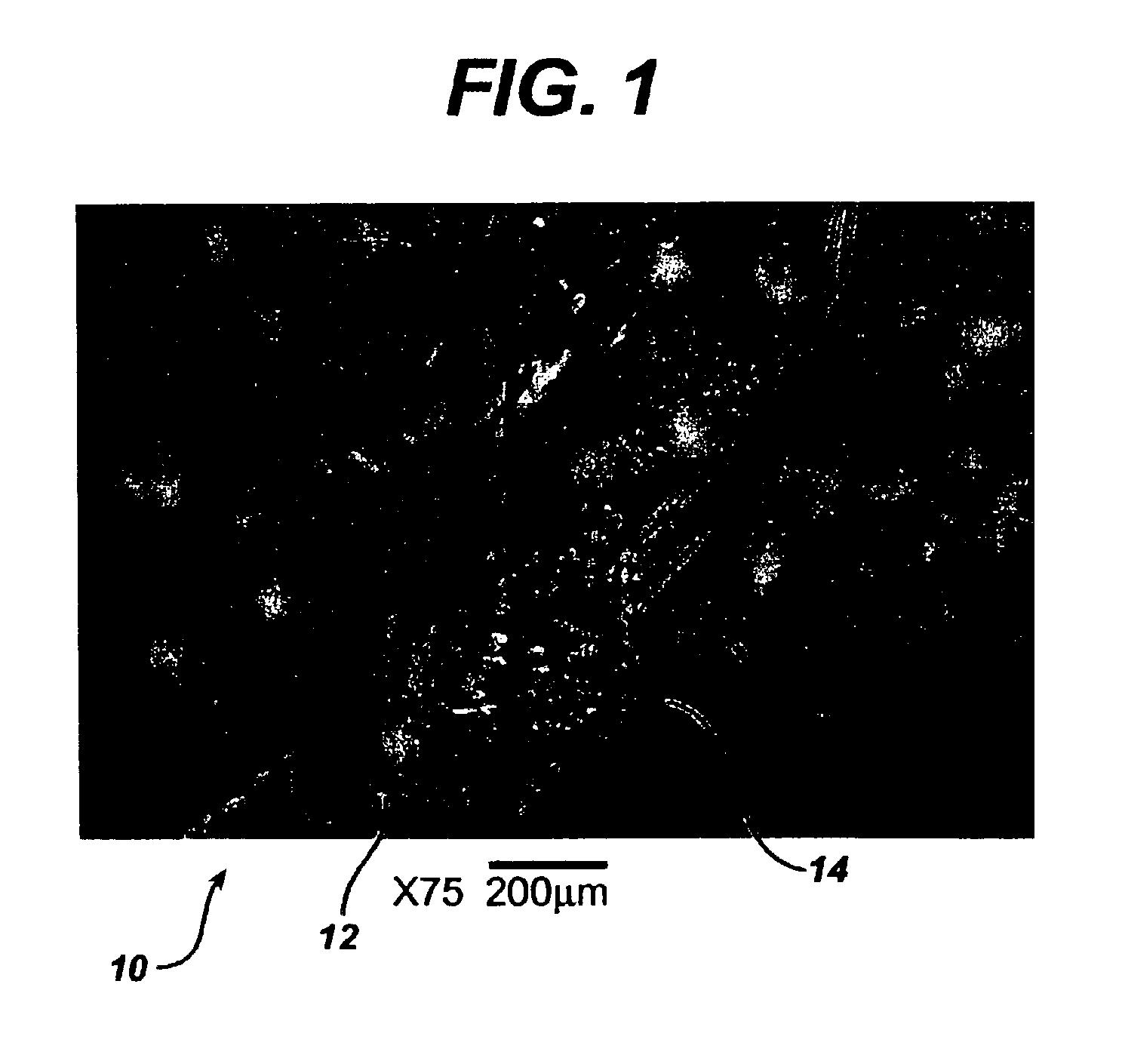Hemostatic wound dressings and methods of making same
a technology of hemostatic wounds and wound dressings, applied in the field of hemostatic wound dressings, can solve the problems of low hemostatic efficacy, low hemostatic efficacy, and relatively high volume of blood loss
- Summary
- Abstract
- Description
- Claims
- Application Information
AI Technical Summary
Benefits of technology
Problems solved by technology
Method used
Image
Examples
example 1
Carboxylic-oxidized Regenerated Cellulose (CORC) / HEC Porous Patch Preparation:
[0111]One gram of hydroxyethyl cellulose (HEC, from Aldrich) was dissolved in 99 grams of deionized water. After complete dissolution of the polymer, 10 grams of the HEC solution was transferred into a crystallization dish with a diameter of 10 cm. A piece of Surgicel Nu-Knit® absorbable hemostat, based on CORC, having a diameter of 9.8 cm (about 1.3 gram) was placed on the HEC solution in the crystallization dish. After soaking the fabric in the solution for 3 minutes, the wet fabric in the dish was then lyophilized overnight. A very flexible patch was formed. The patch was further dried at room temperature under vacuum.
example 2
CORC / CS Porous Patch Preparation:
[0112]One gram of cellulose sulfate (CS, from ACROS Organics) was dissolved in 99 grams of deionized water. After complete dissolution of the polymer, 10 grams of the CS solution was transferred into a crystallization dish with a diameter of 10 cm. A piece of Surgicel Nu-Knit® fabric with a diameter of 9.8 cm (about 1.3 gram) was placed on the CS solution in the crystallization dish. After soaking the fabric for 3 minutes, the wet fabric was then lyophilized overnight. A very flexible patch was formed. The patch was further dried at room temperature under vacuum.
example 3
CORC / MC Porous Patch Preparation:
[0113]One gram of methyl cellulose (MC, from Aldrich) was dissolved in 99 grams of deionized water. After complete dissolution of the polymer, 10 grams of the MC solution was transferred into a crystallization dish with a diameter of 10 cm. A piece of Surgicel Nu-Knit® fabric with a diameter of 9.8 cm (about 1.3 gram) was placed on the MC solution in the crystallization dish. After soaking the fabric for 3 minutes, the wet fabric in the dish was then lyophilized overnight. A very flexible patch was formed. The patch was further dried at room temperature under vacuum.
PUM
| Property | Measurement | Unit |
|---|---|---|
| temperature | aaaaa | aaaaa |
| temperature | aaaaa | aaaaa |
| temperature | aaaaa | aaaaa |
Abstract
Description
Claims
Application Information
 Login to View More
Login to View More - R&D
- Intellectual Property
- Life Sciences
- Materials
- Tech Scout
- Unparalleled Data Quality
- Higher Quality Content
- 60% Fewer Hallucinations
Browse by: Latest US Patents, China's latest patents, Technical Efficacy Thesaurus, Application Domain, Technology Topic, Popular Technical Reports.
© 2025 PatSnap. All rights reserved.Legal|Privacy policy|Modern Slavery Act Transparency Statement|Sitemap|About US| Contact US: help@patsnap.com



